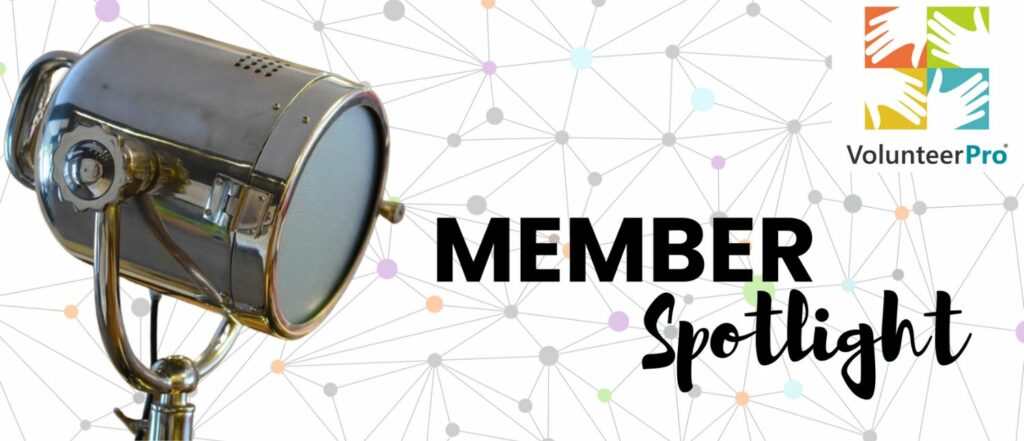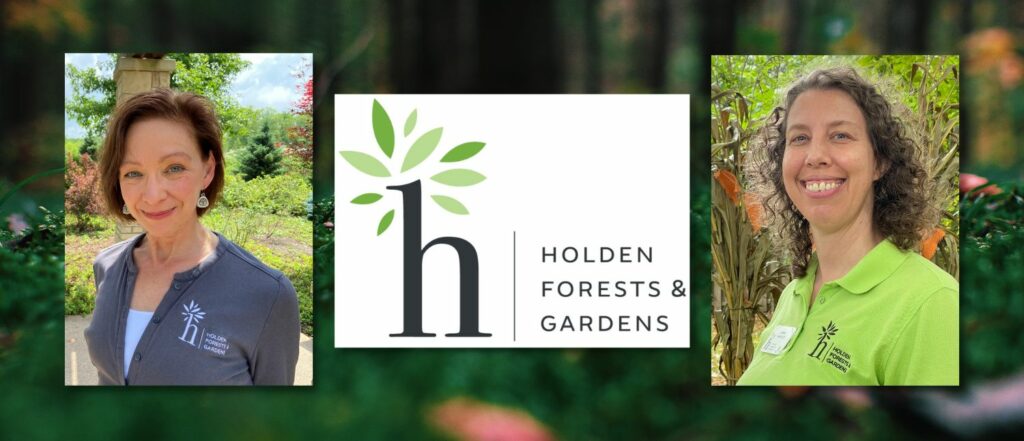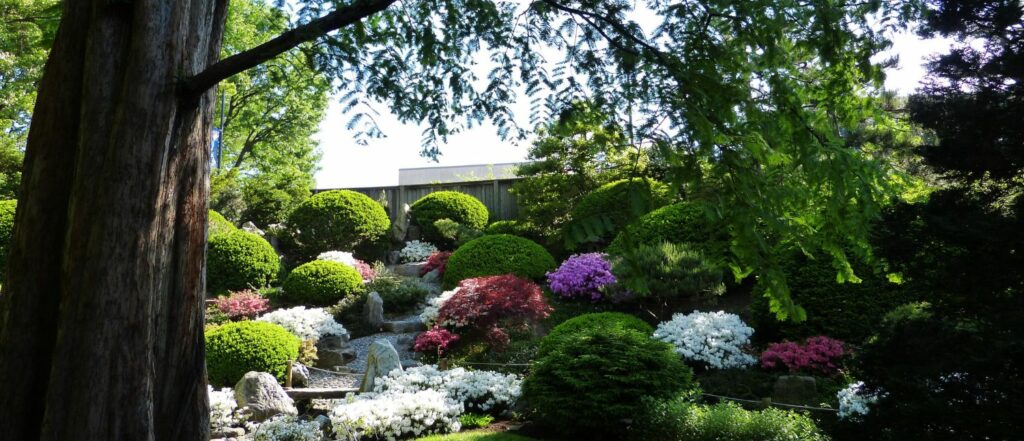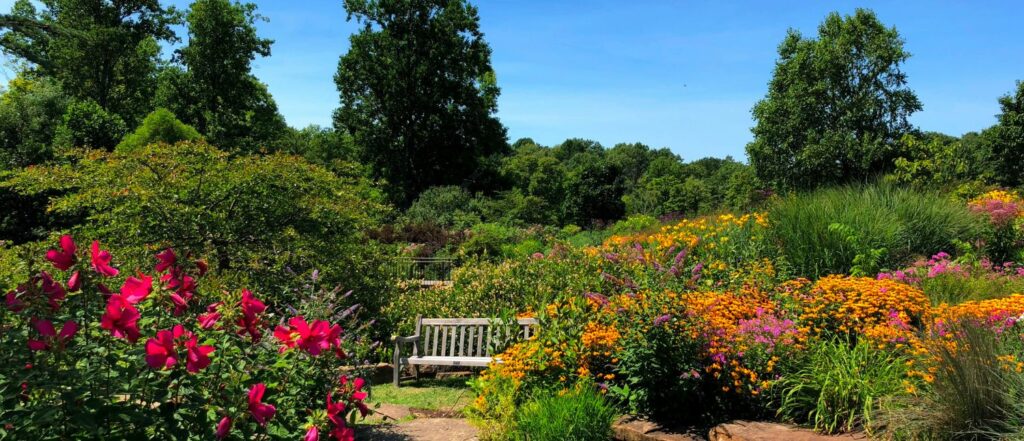Training Volunteers with a Community Focus
The dynamic duo, Tracee Patterson and Sarah Hartley, from Holden Forests & Gardens joined our VolPro Community Manager, Chelsey, to talk about their new project of building a connected community among their volunteer supporters.
Chelsey: Welcome! Tell me a little bit about Holden Forests & Gardens.
Tracee: At Holden Forests & Gardens, our mission is to connect people with the wonder, beauty, and value of trees and plants to inspire action for healthy communities. Our volunteer philosophy is to cultivate meaningful volunteer engagement, where volunteers are supported and appreciated as partners in our work and as leaders in bringing our mission to their homes and communities.
Sarah: Our volunteers serve on two primary campuses and a satellite research station. Our campuses are near Cleveland, Ohio, and are the Cleveland Botanical Garden and Holden Arboretum, are about a forty-minute drive apart. Our David G. Leach Research Station is in Madison, Ohio, about an hour away from the other campuses. Our organization covers both urban and rural communities, so we draw volunteers from a wide area. Pre-COVID, we had around 500 volunteers serving across the locations, interacting with approximately 450,000 visitors. Like many nonprofits, we are rebuilding to pre-pandemic numbers in both visitors and volunteers.
Chelsey: Do volunteers serve at each of your sites?
Sarah: Yes, volunteers mainly serve at the Cleveland Botanical Garden and Holden Arboretum. We have a small number of volunteers assist at the research station.
Chelsey: What do you all feel is the biggest challenge for your program right now?
Sarah: We were thinking about how to move our information digital pre-COVID and it really gave us a push to just do it. It is always a challenge to get everyone on board and switch over to a new way of doing things.
Tracee: I think Sarah just captured my answer in a couple of sentences. For me, I think of it in terms of the three C’s. COVID being number one and the need to continue to be flexible. The second being community and connectedness, to maintain and nurture our volunteers during the pandemic. My third C is change. We have had so many changes in the way we do things, in people’s lives, and in how they volunteer. As Sarah pointed out, we’ve got a lot of change at our organization that reflects in our volunteers, and how volunteers serve our organization.
Chelsey: As far as change, how are you all working through those challenges?
Tracee: First, Sarah and I can be each other’s mutual support, which is nice! But secondly, we’re trying to include the voices and the input of volunteers at every single step of the way, as much as possible. So that includes, not only a focus group after things are done, but it includes volunteers from the get-go. A lot of what we’re building is based on survey responses from the last five years of what we were seeing and hearing from volunteers about what they wanted and needed, including involving volunteers in the very creation of some of these materials. Doing that has been really helpful because then they become some of our best cheerleaders. I think they can sometimes better communicate to other volunteers what these changes are, what they’re about, and help other volunteers navigate bigger changes.
Sarah: With our position descriptions, one change is adding in the outcomes and impact of that particular position. We started looking at it more of how this position relates to the mission. We’ve also had to include more potential risks and hazards too, so that upfront volunteers are warned you could get ticks, poison Ivy, or bee stings. We have also involved volunteers with creating new position descriptions.
Chelsey: I can tell you both are passionate about your work. What do you love most about your job?
Tracee: That’s an easy question for me – it’s the sweet spot, right? It’s when you see somebody who loves what they do, who’s really good at what they do, doing what they do. And then plus it is this great boon to our organization. It’s that Venn diagram, you know, right in the middle, when all those things work together, it’s so exciting. That’s my favorite part.
Sarah: Outside of working with volunteers, it’s a gorgeous work environment.
Tracee: Our gorgeous environment is the fourth reason why people volunteer with us!
Sarah: One of my office locations has this huge window and behind it, it looks out to the butterfly garden. August is my favorite time for the butterfly garden, it’s just gorgeous with colors and everything’s blooming. Fresh air isn’t ever far away!
Chelsey: You talked about going digital, what projects are you working on right now?
Tracee: During the pandemic, we were looking at where the organization was headed, with a focus on volunteer trends. We looked at what the needs of the organization were, how we wanted to grow our program and diversify our volunteer workforce. And at how things have changed in terms of volunteer recruiting, management, onboarding, and training. Our former model was robust, it was detailed – but it just wasn’t serving contemporary needs. That model fit a certain kind of volunteer – mostly retired people with daytime availability, same time every week, doing the same thing year after year.
So that’s when we began to re-imagine things, because we need all sorts of volunteers. We do need those volunteers who can just do that “done in a day” service. And we need folks in that come-every-week-at-the-same-time model. But we also need volunteers in more leadership positions where they’re doing, you know, maybe liaison work between groups of volunteers and staff or they’re doing skill-based volunteering or things like that. We needed and wanted it all! And we wanted to build a system that would accommodate that.
Tracee: We developed volunteer “communities.” We went this route because we didn’t like the idea of “levels” or a “hierarchy” because that’s not what we’re about. Our communities are based around the words in our volunteer philosophy: Cultivate, Partner, and Lead.
Our Cultivate Community is designed for folks who just kind of want to try things out a little bit, see how it goes, see if it’s a good fit for them. For those who are really interested in just episodic volunteering, maybe, you know, a couple of times a year. For those kinds of volunteers, their onboarding is really right-sized for THEM. Then they take an online mini orientation – it’s just a Google slide show with some embedded learning assessments. We call them “self-checks” because it’s really about reinforcing your learning, not “quizzing” you.
Our Partner Community is more for sustained volunteering. For those volunteers who DO want to come every week – either throughout the year or maybe for a season- or who want to do project-based work, that sort of thing. It does involve more training. We have just launched this process and most are moving through the training quickly through Google Classroom. Each Community training builds on the last one, and goes into more details as the volunteer moves through the trainings. We will be launching the Lead Community in 2023, developing volunteers to be leaders for the organization.
Tracee: It’s been a really big re-imagining of the program from soup to nuts – basically, the entire volunteer life cycle. Of course, this scale of re-examination and change is always two steps forward one step backward, but we are plugging along and we’re really excited about it. And what we’re most excited about is the opportunity it presents for our volunteers to learn and grow – and to support Holden Forests & Gardens in rich, deep, meaningful, impactful ways.
Chelsey: Are you envisioning someone jumping in and out of those different community modules or are you envisioning someone starting from the beginning and working through all of them? So, you know, maybe they don’t aspire or think they’re going to be a lead, but they are moving through that path.
Tracee: It’s really whatever is best for them and their volunteer journey. They might start in Cultivate Community and if that is the best fit for them, stay for the rest of their volunteer life with us. Others might intend to just do that but once they get started….!
I’m remembering one volunteer who came on thinking they were only going to do episodic volunteering – and then become much more engaged. Cultivate Community is a great foundation for volunteering for our organization – but volunteers are encouraged to follow whatever volunteer path works for them.
Sarah: Tracee and I are still working on which volunteer positions would fit into each community. A volunteer interacting with guests or a position that requires more of a commitment will be in our Partner Community. Most of our ongoing volunteers will be in Partner Community. Our Lead Community volunteers will need to have at least two years volunteering with us, and they will take leadership roles with special projects, committees, or act as a liaison between volunteers and staff. And I do think volunteers may move in and out of different communities-based positions and commitment.
Tracee: It is a work in process – to add new communities and think through all the processes.
Chelsey: Well, I think this is just great. It’s wonderful that you all are taking this on and getting people that are initially interested in volunteering with you and getting them more acquainted with your organization. It’s amazing! I feel with special events or one-time volunteer opportunities, as a volunteer you don’t always get that orientation or those interactions that would help you become an advocate out in the community. And I love this is not transactional!
Chelsey: We love having you all as members of VolPro. What would you say to someone thinking about joining VolunteerPro?
Tracee: Do it yesterday. Yeah. Do it yesterday, seriously.
Sarah: It is great being able to attend the workshops and other live gatherings. And you have a group where you see familiar faces, and it is very personalized.
Tracee: We benefited a lot from all the free stuff before ever becoming members, and we just couldn’t imagine what MORE there could possibly be! But then we happened to get some funding and we joined for a year – and now, we build it into our annual budget. One of the things I most appreciate about VolunteerPro is that I began to feel equipped, I began to believe that I can actually DO this, you know? I may need a little cheat sheet; I may need a little help from Tobi or to re-watch her presentation – but I can DO this thing!
Chelsey: If you had one piece of advice for a new leader of volunteers, what would it be?
Sarah: One thing I think of is that it is important to find the resources and get the training for this work. Leading volunteers is a real job with a real skillset. It’s important for folks that are interested in working with volunteers, seek out training and connect with a network that is centered around volunteerism.
Tracee: But you know our field, this discipline, is a highly sharing and mutually supportive community.
Chelsey: Now for the fun questions! Tracee, what has been your most favorite place you have traveled?
Tracee: I just got back over the summer from a bucket list trip. I went to the great redwoods. Of course, I love nature and the environment, and I’m especially taken with the “wild places.” Putting your hand on a 350-foot tree that’s been there for 2000 years, it makes you feel so insignificant. In a really good way.
Chelsey: Sarah, what do you do outside of work?
Sarah: I am a mom outside of work, so that takes up a lot of my time. One thing I do is perform in a community band in the percussion section playing auxiliary instruments. Mostly that is bass drum and cymbals, and then more unique instruments like sleigh bells, castanets, and bongos. This summer I had a piece that even called for a duck call, so lots of variety.
Chelsey: It was such a pleasure catching up with you all! Thank you so much for taking the time to chat with me and share your thoughts with our readers.










